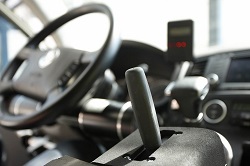Reinventing the steering wheel
Automakers are increasingly embracing steer-by-wire (SBW) technology, where the steering wheel is connected to the wheels by computer instead of mechanically. This up-and-coming technology is especially interesting for electric car manufacturers who are highly interested in furthering SBW models. The EU-funded STEERINGFEELSBW (Development and enhancement of a steering feel model for super lightweight steer-by-wire vehicles) worked on developing a force-feedback model for the steering system of super lightweight Steer-By-Wire (SBW) vehicles. To achieve this, the project team investigated the role of force-feedback, i.e. the steering feel in a car, in order to enhance the steering experience in SBW systems and promote safety. It developed a driving simulator and conducted experiments in an SBW rig to collect required data. This helped elaborate a steering feel model specific to a driver through a learning algorithm for more comfortable steering. Noting that the dynamics between steering wheel angle and steering wheel torque feedback is crucial to the steering feel, the team used a specific hysteresis-based steering model to simulate the steering feel. It also integrated factors such as physical workload, driving effort, lateral acceleration, handling performance and weight of vehicle to obtain accurate simulations. The test results revealed the accuracy of the proposed steering feel models, demonstrating that the hysteresis-based model extends a realistic, insightful steering feel to further safer, more comfortable driving. In essence the hysteresis-based model can help improve design and tuning, addressing the form and magnitude of steering wheel torque compared to those in conventional vehicles. It can also pattern the hysteresis characteristic appearing in the conventional steering systems, representing a very useful tool in enhancing the steering feel. The project’s results have instigated more research in the field as the importance of perfecting models related to the steering feel. The technology is not only important for private cars but also for industrial vehicles such as electric forklifts, tractors and rubber-wheeled vehicles. The use of SBW systems is expected to increase in coming years, and this project has successfully helped set the stage in this direction.




